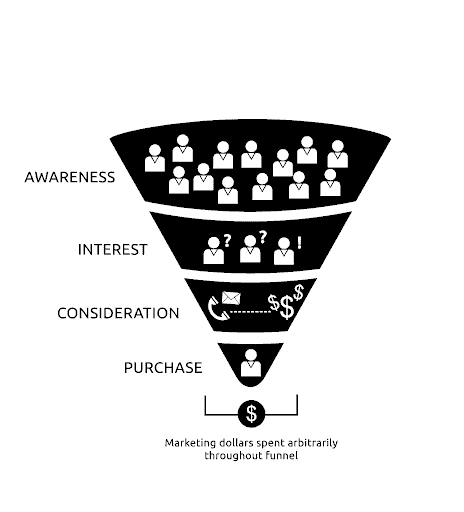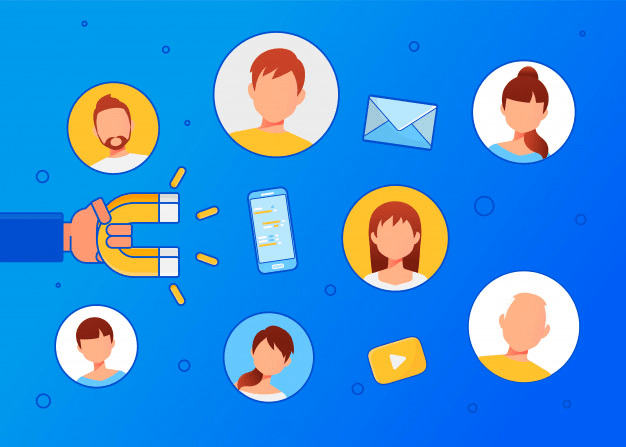
Digital Marketing Basics | What is Digital Marketing
8+ Minute Read
What is Digital Marketing?
Marketing is Systematically communicating your product’s value to the market. Now if the communications channel used to pass on the product value is through the Digital Channels or Internet then it is called Digital Marketing.
Digital Marketing is not just a marketing method. All the marketing methods that use digital media or the Internet are brought under one umbrella and termed Digital Marketing.
Types of Digital Marketing – digital marketing basics
- SEO (Search Engine Optimization)
- SEM/PPC (Search Engine Marketing / Pay Per Click)
- SMM (Social Media Marketing)
- Content Marketing
- Affiliate Marketing
- Video Marketing – YouTube Marketing
- Viral Marketing
- Influencer Marketing
- Email Marketing
- Mobile Marketing
Definition: The process of optimizing your website for the search engines to get good quality traffic by ranking on the top for the search results for a particular set of keywords.
Why Do we do it: To increase traffic from search engines to our website without any costs. (Free of Cost traffic)
How do we do it: It is done in 2 types.
1. ON Page
2. OFF Optimization.
2. SEM/PPC (Search Engine Marketing / Pay Per Click Advertising)
PPC Definition: The process of advertising on Search Engines to get more traffic to your website in a quick time by paying the search engine each time the ad is clicked is called SEM – Search Engine Marketing.
Since we pay per click on your ad it is also called the PPC Method of advertising. – PAY PER CLICK.
Why Do we do it: To increase traffic from search engines in a quick time by paying the Search Engines.
How do we do it: By using the search engine Ad platforms, Google AdWords for Google.
3. SMM (Social Media Marketing)
Definition: The process of using social media sites as a marketing platform for interacting and Engaging with your customers to build good customer relations is called Social Media Marketing.
Why Do we do it: To Interact and Engage with your customers and to build good customer relations. Thus establishing brand engagement that could help in long-term sales.
How do we do it: By using the Social media platforms like Facebook, Instagram, Twitter, and LinkedIn.
4. Content Marketing
Definition: The process of creating and sharing content (Text, Images & Videos as blogs, Vlogs, and Social media posts) to promote a brand and create interest in its products or services.
Why Do we do it: To spread brand exposure and increase traffic from search engines to get more leads & sales.
How do we do it: By using the platforms like Blogger, and YouTube for Blogs and Vlogs, and Social Media platforms for posts? Quora for Q & A type content.
5. Affiliate Marketing
Definition: A way of performance-based marketing where individuals or Teams (Affiliates) market products for which they make a commission on each sale that happens through them.
Why Do we do it: To generate sales and leads which would increase the revenue of the person or the team
How do we do it: By using Affiliate Partner programs and Networks that connect the affiliates & product owners and facilitate them with the tech. required to track sales.
Understand what easily is Affiliate Marketing.
6. YouTube Marketing – Video Marketing
Definition: “Generating video content for your brand/product and using that video content for marketing by uploading them onto video platforms like youtube is called YouTube Marketing or Video Marketing.”
Why Do we do it: Videos are the way to go. videos can convey a lot of information in a quick time and with a better impact. So we can use Video marketing to create an impact on users and turn these users into customers.
How do we do it: We use video platforms like YouTube and others.
7. Viral Marketing
Definition: “Viral marketing is a marketing technique that encourages, influences, and inspires users to spread or share the message with other users which could lead to multi-fold sharing making the content Viral.”
Why Do we do it: To increase exposure for the brand and to bring visibility and reach to the content.
How do we do it: By generating viral content, which has emotions, sentiments, and humor that is influential and promoting it on social media.
8. Influencer Marketing
Definition: Influencer marketing is a marketing technique where instead of companies marketing directly to consumers, they will use the key leaders to market their product by inspiring/hiring/paying them for influencing the consumers.
Why Do we do it: To increase exposure for the company to a targeted set of consumers.
How do we do it: By inspiring or hiring or paying a key leader/influencer to market our product on different media and platforms?
9. Email Marketing
Definition: Email marketing is the process of sending a commercial message, using email, typically sent to a potential or current customer.
Why Do we do it: To increase user engagement and targeted Sales.
How do we do it: Using bulk Email Marketing Tools available in the market.
10. Mobile Marketing
Definition: Mobile marketing is the process of Attracting mobile users by Advertising on Mobile Applications.
Why Do we do it: To increase brand reach, visibility, and traffic.
How do we do it: Reach a specific audience on their Smartphones, or tablets through responsive websites, SMS, MMS, or mobile applications.
Digital Marketing Vs Traditional marketing – digital marketing basics
Better Geographical Reach:
In traditional marketing, if you are setting up a hoarding or distributing brochures/pamphlets, your marketing is restricted to that location only. While in Digital Marketing, you can market in any location and get a wider reach for your product/brand.
Focused Targeting:
In traditional marketing, you can’t focus on the exact set of target audiences (Poor focus). While in Digital Marketing you can target users based on their Age, gender, Location, Interests, and more.
No Operational Costs:
In traditional marketing, we have operational costs such as printing, transport, and so on while Digital Marketing has no operational costs involved.
Control Over Budget:
In Digital Marketing, there are predefined costs involved that you can’t control. While in Digital Marketing you can control over budget, you can decide how much you wanted to spend.
Analytics and Reports:
In Digital Marketing you can get a detailed report on how your ad is performing, while in Traditional marketing there is no such possibility.
Traditional Marketing Funnel

Brand/Product Visibility and its importance
Visibility – Get Seen/ Become Visible.
Being Found when someone is searching – 100% Targeted.
Your Product and its message need to be heard repeatedly to rise above the noise of your competitors.
How Do We Achieve –
- SEO/SEM – Get Found when a user is searching for it.
- Encouraging Brand Mentions. – SMO, Hashtags.
- Targeting the most relevant keywords.
- Keeping an eye on the Competitor.
- Creating Viral Content.
- Creating online Buzz / Make it Hot & Trending.
- Generating Positive PR for a brand – Reviews, Referrals.
Importance of Visibility:
- More Visibility – More chances for visitors.
- The more your prospective customers see, hear, and read about you the more you are seen as an expert.
- Visibility also attracts affiliates, partners, and joint ventures.
- Visibility encourages and motivates the customer to look at the product along with the brand attributes.
Traffic – Targeted VS Untargeted Traffic
Traffic: The Number of people visiting your website is called the traffic of your website.
Types of Traffic:
- Direct Traffic
- Organic Traffic
- Paid Traffic
- Referred Traffic
- Social Traffic
- Email Marketing Traffic
- Direct Traffic: If the user is landing on your webpage directly by entering the URL directly in the browser. – Branding is the way of doing it.
- Organic Traffic: The process of getting traffic from the search results on search engines – Done by SEO.
- Paid Traffic: The process of getting traffic from the Ad Campaigns that are run by paying money to different platforms or tools is called paid traffic. – Done by AdWords.
- Referred Traffic: The process of attracting visitors from other websites/blogs to your website. – Done by a proper link-building Strategy.
- Social Traffic: The Process of getting traffic from links posted on Social media platforms is called Social traffic. – Done on Facebook, Twitter, LinkedIn, Instagram, and Pinterest.
- Email Marketing Traffic: The process of getting traffic from links that are in the emails sent out as a part of the email marketing campaign. – Done by Email Marketing Campaigns.
- Targeted Vs Untargeted Traffic: If the Traffic that is coming to your website is from targeted Keywords or Targeted Audiences then it is called targeted Traffic.
- SEO/SEM(PPC) – Targeted Keywords
- SMM/Email/Referral – Targeted Audience.
- High Cost
- High Conversions
- Better ROI
- Positive Impact on SEO
- Improve brand Awareness and brings Brand retention.
UN Targeted Traffic:
- Relatively Cheaper Cost
- Poor Conversions
- Bad ROI
- Negative Impact on SEO
- Could improve brand Awareness but no retention.
Converting Traffic into Leads.
Unless your business is an E-commerce business
where you would expect sales from the website, most of their business would
target to get leads from the traffic that is coming to the website.Leads
What are Leads?
From the website traffic that is brought from the potential customers, if the users show interest in the product/service/Brand and drop their contact details on the website then it is called a Lead.
How do you convert traffic to Leads?
When a website visitor willingly gives their contact information to you, this is called a traffic-to-lead conversion.
Attract the customer to drop his details. Have lead-generating content.
What Should You Offer to Capture Leads?
- Webinars (An invitation to sign up or to download a previous recording).
- Free trials
- Free consultations
- Books on a topic related to your products/services
How Much Information Should You Ask for?
- Just enough data to follow up on the lead.
- In most cases just Name, Email, and Mobile Number
Who is a visitor:
Anyone who is landing on your website is a visitor. All the users visiting the website are traffic and the Single User is called a Visitor.
Visitor Engagement:
Visitor engagement is very important to convert the visitor into a lead or a sale.
Every bit of content on the website should have a purpose – No Nonsense, please
10 Ways to increase visitor engagement
- Rich User Experience
- Clean and Neat UI
- Optimize your content
- Proper interlinking
- Engage them with the call to Action Buttons
- Write about debatable topics
- Write topics related to your target Audience.
- Optimize website speed.
- Easy navigations
- Optimize for Mobile Traffic
Visitor Retention
Bounced user: If a Visitor is landing on a webpage and leaving the page in a QuickTime without making any action in the page, or without moving further pages in the same website then he is called a bounced user.
Visitor Retention: The Process of keeping the visitor on the website for a long without letting him jump out of our website is called visitor retention.
10 Ways to improve visitor Retention

Bounced user: If a Visitor is landing on a webpage and leaving the page in a QuickTime without taking any action on the page, or without moving further pages in the same website then he is called a bounced user.
Visitor Retention: The Process of keeping the visitor on the website for a long without letting him jump out of our website is called visitor retention.
- Videos on the home page.
- Cut Out the unnecessary or non-value content.
- Easy to Navigate buttons throughout all pages.
- Website Speed
- Triggering Chat – Live chat on the Website.
- Put solutions Above the Fold.
- Triggering exit intent on pivotal pages
- Website internal Search would help
- UI & UX
- Study Analytics and Focus on KPIs – Key Performance Indicators.
Hope you can understand What is Digital Marketing. Still you have doubts regarding what is digital marketing, you need to learn Digital Marketing. Learn Digital Marketing course with free 1-year support.

